
Charcoal is a fantastic drawing medium and many artists – myself included – love using it. It’s easy to work with, and very forgiving. You can create wonderful textures – very rough or very smooth, and everything in between. And you can create all sorts of different looks: from dark and dramatic, to light and airy.
The possibilities of this versatile medium are endless. However, when you’ve never worked with charcoal before, it can feel a bit daunting or awkward to just pick up a piece of charcoal and start working. Where to start? And what exactly do you need?
With charcoal being the main medium of my portrait class The Many Faces of Charcoal, let me give you 3 tips to get started with charcoal drawing.
1. Experiment with different types of paper
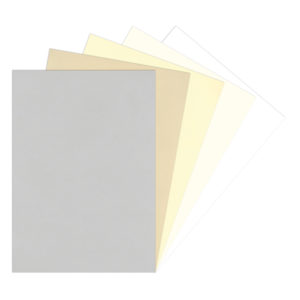 You can use charcoal on many different types of paper, with different types of texture (‘tooth’).
You can use charcoal on many different types of paper, with different types of texture (‘tooth’).
If you use paper with a bit of a rougher tooth, the charcoal will stick better to the paper and is therefore easy to apply. The texture of the rougher paper can also be visible in the drawing, which can be something you like or don’t like, depending on the look that you’re going for. Examples of drawing paper with more tooth are newsprint paper, charcoal paper, and pastel paper.
You can also work on smoother types of paper. The charcoal will not ‘grab’ to the paper as easily as with rougher paper, but that also means that it’s very well suited for working with erasers. An example of smooth drawing paper that works well with charcoal, is Bristol paper.
Personally I also love to use charcoal on watercolor paper. Especially the smoother type, called ‘hot press’ watercolor paper. This paper has enough tooth to take on the charcoal easily, but it’s not highly textured. And since I also use watercolor paper for other types of mediums, like acrylic paint, pastel, and more, I always have it at hand and I don’t have to buy it specifically for charcoal drawing.
2. Use different types of charcoal for different purposes and effects
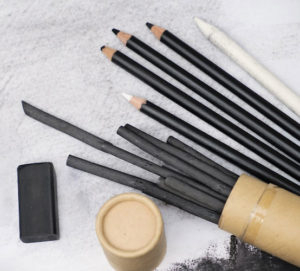 When we talk about charcoal as a drawing medium, there are actually different types of charcoal that we’re referring to.
When we talk about charcoal as a drawing medium, there are actually different types of charcoal that we’re referring to.
Charcoal can be used in its most basic form, just a piece of willow or vine charcoal, to create soft marks which blend well. But you can also use compressed charcoal, for a darker look, or charcoal powder or pencils.
In this article you can find more detailed information on the different types of drawing charcoal that exist, and the various purposes they can be used for.
3. Use other tools for additional effects
Charcoal drawing is not just about working with charcoal. You can do much more with it if you use it in combination with other tools.
An essential tool for charcoal drawing is an eraser. Not so much in order to correct mistakes – although you can use it for that purpose as well of course. But more importantly, you can use erasers to create the lighter tones and highlights of your drawing. You can use a kneaded eraser, which can be molded into any shape you want, to take off parts of the charcoal. Or you can use harder erasers in thinner pencil shapes to create interesting line work in light tones.
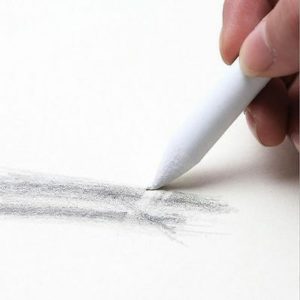
Other tools that you can use for charcoal drawing, are rags or a chamois to blend and smooth out the charcoal. And if you want to blend finer details, blending stumps or tortillons in different sizes come in handy. I have to admit I also use my hand or fingers for this purpose sometimes, although you have to be careful with that because the oils from your skin can be transferred to the paper and create stains.
Now, let’s get started with charcoal drawing! 🙂
As you can see, you really don’t need much to get started with charcoal drawing! That’s one of the things I love about this wonderful medium.
So just grab some paper, a piece of charcoal, and maybe an eraser, and just start. Maybe first use some cheap paper to try out what this medium ‘feels like’ when you use it. Just do some scribbling, see how it looks when you press hard or work very lightly, or what it does when you blend it and smooth it out. Make some marks, use the charcoal on its side and with the tip, so you get different looks and effects. Just go ahead and play, that is always the best start!
All about charcoal
If you would like to take an in-depth class on charcoal, then I recommend my charcoal portrait course The Many Faces of Charcoal.
In this comprehensive online class you'll learn to draw expressive faces using a variety of charcoal drawing techniques. We're going to make projects in different styles and work with various types of charcoal – from vine & willow charcoal, to compressed charcoal, charcoal pencil, charcoal powder, and more!
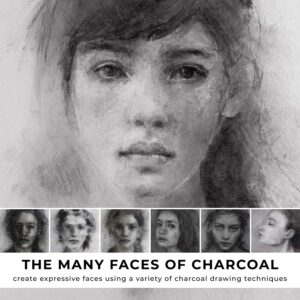

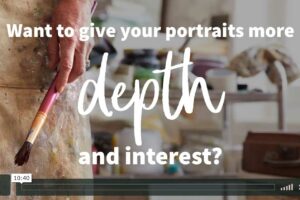
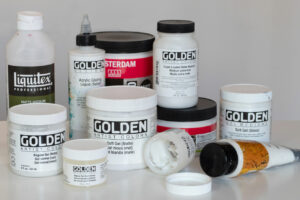

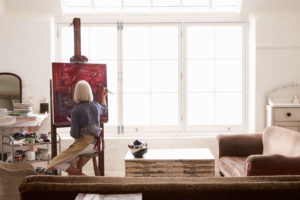
HI, Just found this site, as I was looking for any type of charcoal holders to keep hands from getting dirty. Any suggestions? Requested to join the group.
Hi Laura, thanks for your comment! Did you get into the group? I do have a few holders, but in practice I don’t really use them for charcoal. Only for hard pastels when they become too short to be able to use them. If my hands become (too) dirty when working with regular charcoal I just use a baby wipe to clean them every now and then. Hope this helps!
I took Juna’s Drawing in the Soul class and also the Many Faces of Charcoal. I am here to tell you it was the best class I have ever taken – bar none! If you are hesitating – don’t. I am a fairly experienced artist and I learned so many new techniques in this class. Charcoal is amazing you will be astounded at what you will be able to achieve. Juna has pushed the boundaries of the medium. Sign up now!
Thankyou so much ..I enjoyed watching the video of the portrait in charcoal. I love to sketch faces but don’t know how to then add watercolour as I’ve never had lessons so am rather stuck ! Using charcoal might just be the answer to building up a lovely finished portrait so I’m hoping to join your February 17 th class
🙂
Yes, I think that would work well! In my opinion, one of the most fundamental skills for making portraits is learning to work with tonal values. That’s because with tonal values you can really create the “structure” and 3D look of the face. And charcoal is a great way to learn to work with tonal values! And on top of that, you can create lots of fun textures and looks with charcoal. So I think you’re going to really enjoy the class!
Thanks for stopping by, and I’m happy to hear that you liked the video! 🙂